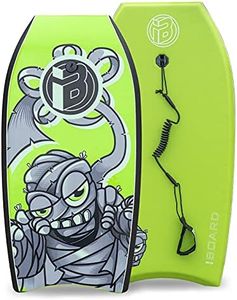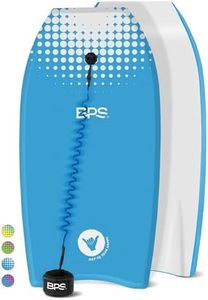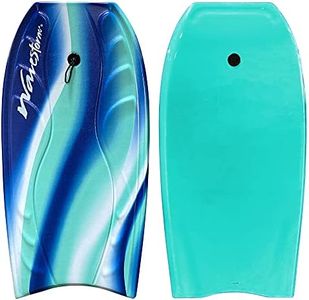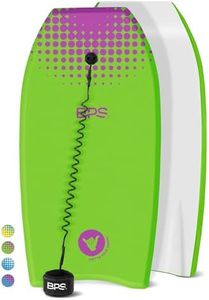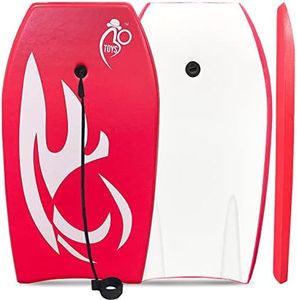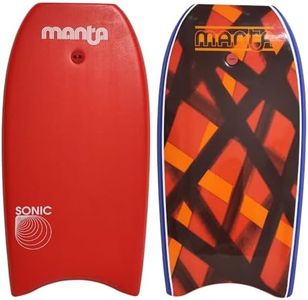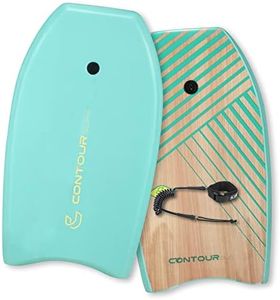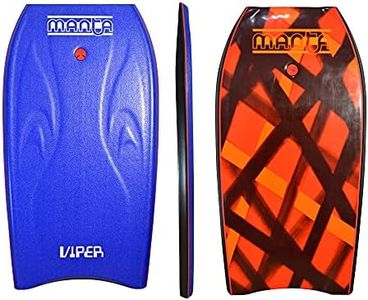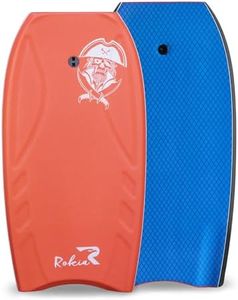We Use CookiesWe use cookies to enhance the security, performance,
functionality and for analytical and promotional activities. By continuing to browse this site you
are agreeing to our privacy policy
10 Best Boogie Boards
From leading brands and best sellers available on the web.By clicking on a link to a third party's website, log data is shared with that third party.
Buying Guide for the Best Boogie Boards
Picking the right boogie board is all about matching your needs, skill level, and local wave conditions. Your choice should also depend on your body type and how you plan to use the board—whether for casual fun, learning, or pushing your skills further. Understanding the main features will help you get a board that’s safe, durable, and enjoyable for every ride.LengthThe length of a boogie board determines both your comfort and performance in the water. Typically, the right board will reach from the ground up to your belly button when standing. Shorter boards are easier for kids and smaller riders—they’re simple to control but might not give enough float for larger people. Longer boards offer better flotation and speed, ideal for bigger riders or those seeking longer, smoother rides. To pick the right length, consider your height and weight: if you’re lighter or shorter, lean towards a shorter board, while heavier or taller individuals should aim for a longer board.
WidthWidth impacts the board’s stability and maneuverability. Wider boards are more stable and easier for beginners or casual riders, making balancing simpler. Narrower boards are more agile and favor quick turns, which suit more experienced users interested in tricks. If you value a steady ride or are new to bodyboarding, look for a wider model; if you want to carve waves and feel more connected to the water, choose something slimmer.
Core MaterialThe core is the board’s main internal material, affecting stiffness, weight, and overall feel. Most boards use either PE (Polyethylene) or PP (Polypropylene). PE cores are softer and give a smoother ride in cooler water, making them better for casual use and beginners. PP cores are lighter, stiffer, and perform better in warm water or for advanced riders needing control and speed. Your choice depends on your local water temperature and if you prioritize comfort or performance.
Tail ShapeThe tail shape influences how the board moves and holds in the water. The two most common shapes are crescent and bat tails. Crescent tails offer more grip and stability, making them good for beginners or choppy waves. Bat tails are wider and give extra lift and speed, offering smoother rides for those who want to attempt tricks. If you’re starting out or want reliability, go for a crescent tail; if you crave maneuverability, try a bat tail.
Deck MaterialThe deck is the top surface where you lie, and its material affects comfort and durability. Most decks feature either softer foam or textured surfaces. Softer decks are gentle on your body, ideal for long sessions, while textured ones provide extra grip, helping stay on the board in challenging waves. Beginners and those seeking comfort may prefer softer decks, while those ready for tougher conditions might favor a textured grip.
StringerA stringer is a rod (sometimes more than one) inside the board that increases strength and helps it maintain shape. Boards with stringers are sturdier and last longer, which is useful for heavier riders or frequent use. If you want a board that stays stiff and performs well over time, especially if you’re heavier, look for one with a stringer.


